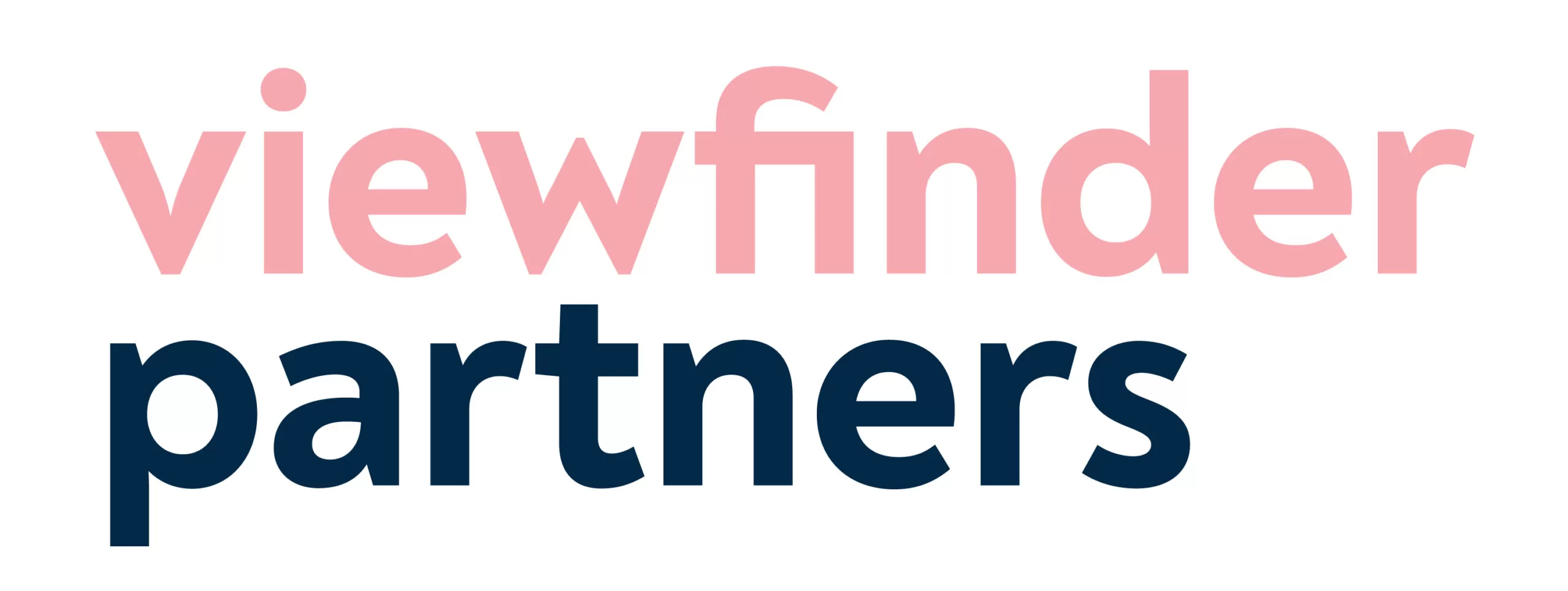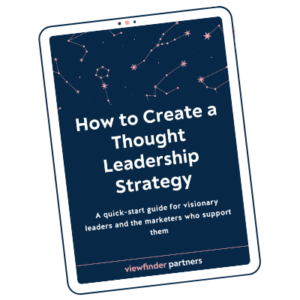When you hear “BIG, BOLD IDEAS,” what do you picture?
I think of a writer smiling at her computer screen, typing out her masterpiece with conviction and confidence. Or a trailblazer cresting a mountain peak. Or someone standing on stage, power pose activated, lit by a spotlight.
You know what doesn’t come to mind?
Endless email threads. Brainstorm sessions with 14 people. Wordsmithed Powerpoint slides. Word docs titled “Manifesto-v12-LP-KZ-TA-edits-4-FINAL-3.doc.”
But I have found that the reality of producing thought leadership at most companies means very little of the former…and way more of the latter.
I think of it as “creativity by committee.” And while there are certainly some benefits of having a big team powering a big idea, it’s not always the fastest or most exciting way to take an idea from inception to public debut.
So how do we keep the spirit and energy of that brilliant solo artist, but translate it in the reality of corporate thought leadership?
- Agree on a strategy.
- Clear the room.
- Dig up the personality.
Agree on a strategy
If you want the luxury of time, space, and autonomy to develop your ideas, you have to show your broader team that you have a plan. When I work with individual thought leaders on a strategy, we do it in the context of their broader business strategy. What are the organization’s goals, and how does your individual thought leadership platform support that strategy?
Whether you’re the CEO or someone in a more niche role, you’ll get a lot more space to experiment if you show that you’re following a shared playbook.
Clear the room
Thought leaders are people, not companies. So you can’t develop a big idea by assembling a committee. When you have too many cooks in the kitchen, ideas turn from exciting and inspired to muddled and messy.
After we’ve agreed on the strategy, I have one goal: Clear the room. It’s important for me to work directly with the one person whose voice will be heard. That way, I can help them reflect on their personal experience and stories. I want to know: Who are you? What led you here? What’s coming next? (That’s what your audience wants to know, too. Forget the royal We and start talking in the first person singular. Tell us about you and what you know.)
If you’re trying to create by committee, take a step back. Whose name is going on the article? (And if you’re planning a byline with six authors…why?) Who is delivering the speech? Whose voice will be heard? Clear the room and let that person have the space they need.
Dig up the personality
Thought leadership should have a clear perspective. Your audience should be able to tell who wrote it. The article that you write should sound different than something your boss or colleague published. So while you can be working within your company’s strategy, and you can follow your company’s style guide, your unique voice should come through.
That’s why I spend time going deep on specific feelings, stories, experiences, reflections, and predictions. Interrogate your own ideas. Go a level deeper. Relate the big-picture ideas to something specific that you have experienced. Make it about you.
Finally, I’ll leave you with this advice. People pay attention to people. Personal insights and stories are so.much.more.memorable than the perfectly edited corporate message. Let’s stop getting in our own way, and have the courage to let our messy, memorable personalities shine.







